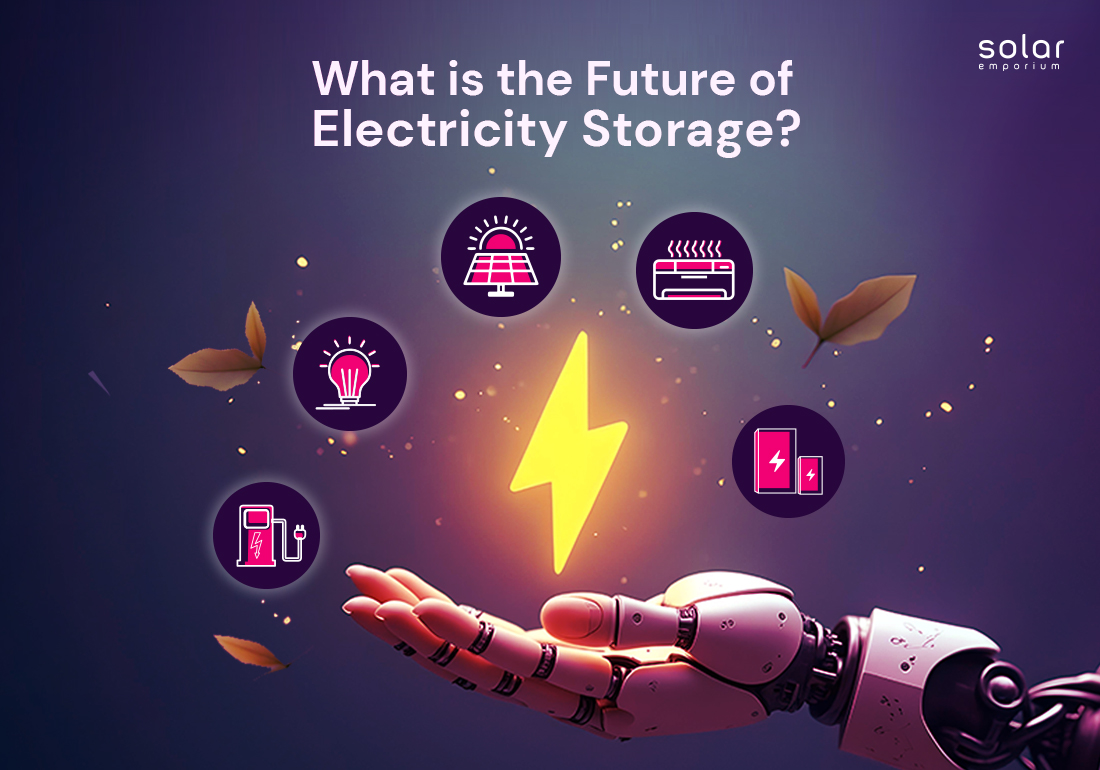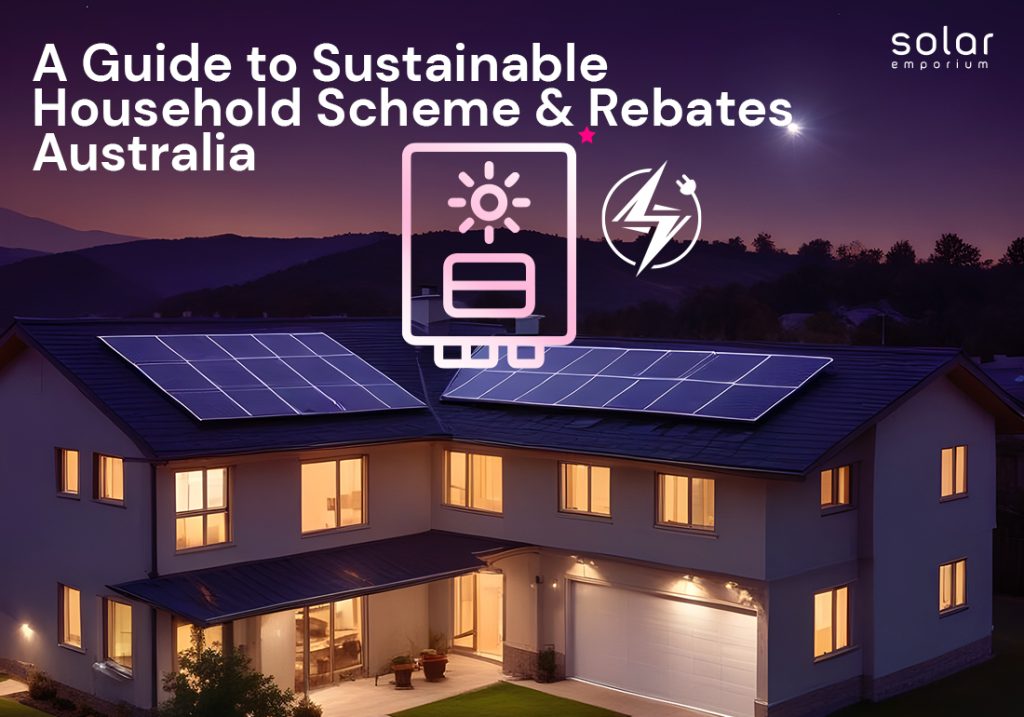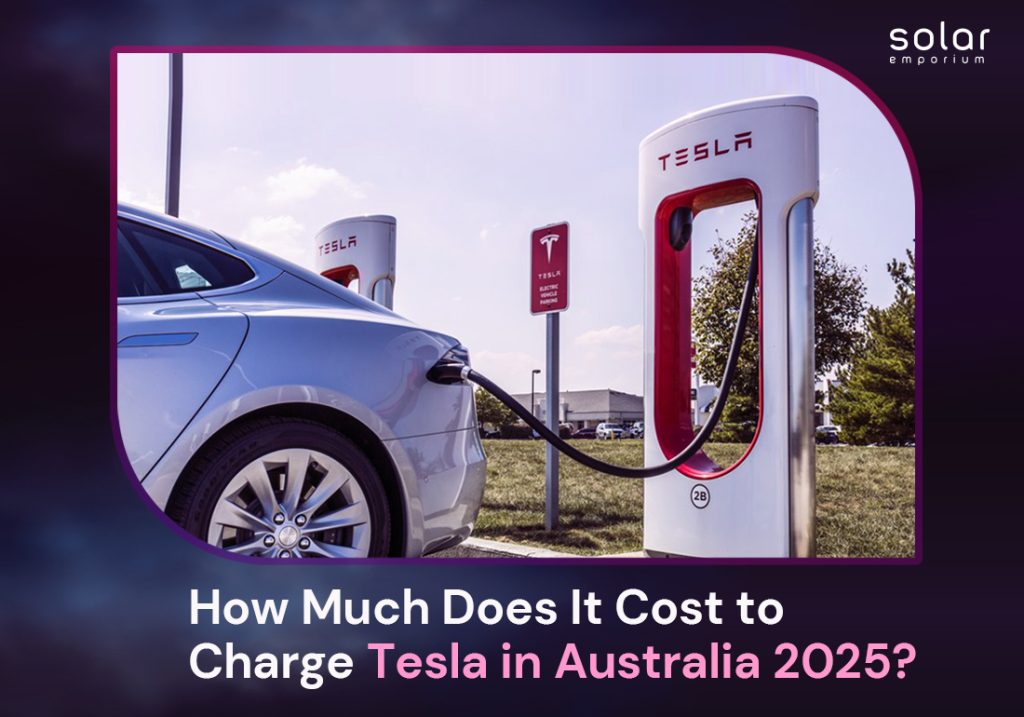Electricity storage is one of the most pivotal technologies shaping the future of global energy systems.
We all know that renewable energy sources like solar and wind have become increasingly integral to our power grids. So, the need to store electricity effectively has never been more critical.
In particular, Australia is at the forefront of this revolution, embracing innovative storage solutions that are set to transform how the nation generates, stores, and consumes electricity.
But have you ever imagined what the future of electricity storage holds? What groundbreaking innovations lie just around the corner, ready to reshape the way we harness and store energy?
If not, buckle up! This blog will take you on a thrilling journey into cutting-edge technologies that are transforming the energy storage world.
So, let’s begin by understanding why electricity storage is essential for the future of energy.
Unlocking the Power of Electricity Storage: How It’s Shaping the Future
Over the past decades, fossil fuels have been the dominant energy source, generating a major portion of the world’s electricity. More specifically, around 60% of the world’s electricity comes from burning coal, oil, and natural gas.
This percentage is declining daily as the world’s energy mix undergoes a fundamental shift and people become more aware of the deadly consequences of global warming and climate change.
They are embracing more sustainable energy sources like solar, wind, and hydroelectric power supply.
However, the main issue is that these renewable sources are intermittent and produce electricity only when the sun is shining, or the wind is blowing.
So, this is where electricity storage comes in!
Energy sources store excess energy during peak production hours and allow that energy to be used later during low production, blackouts, or extreme weather conditions.
This ability to bridge the gap between supply and demand makes storage critical for ensuring grid stability, reliability, and sustainability. It also enables a cleaner, more resilient energy future.
But remember that without efficient electricity storage, excess energy can be wasted, and you won’t be able to enjoy the full benefits of renewable sources.
How Electricity Storage is Shaping Australia’s Renewable Energy Journey
Australia is geographically well-positioned to benefit from electricity storage. With abundant sunshine, vast open land, and massive renewable energy potential, the country has made significant efforts to become a leader in clean energy.
The nation is also embracing various technologies to address renewable energy storage challenges.
Australia is one of the leading countries in solar power generation, boasting the highest number of solar panels per capita. With over 3.4 million households having solar PV systems on their rooftops, the country takes all the advantage of its natural blessing.
In 2023, the country had installed over 20 gigawatts of solar capacity, and wind energy had also risen, contributing significantly to the country’s energy mix.
That doesn’t end here! States like South Australia have pioneered large-scale energy storage projects, including the Hornsdale Power Reserve, which uses Tesla’s Powerpack technology.
This battery system can store 150 MW of electricity, making it one of the largest lithium-ion batteries in the world. Sounds crazy, right?
Projects like these have proven essential in stabilizing the grid, reducing the reliance on fossil fuels, and enabling greater integration of renewable energy sources.
Governments, residents, and industry owners are collaborating to identify innovative ways to make these battery storage options widely accessible to people of all incomes.
However, Australia’s commitment to 43% emissions reduction targets by 2030 and reaching net zero by 2050 requires further advancements in electricity storage technologies.
From Batteries to Beyond| Innovative Technologies in Electricity Storage
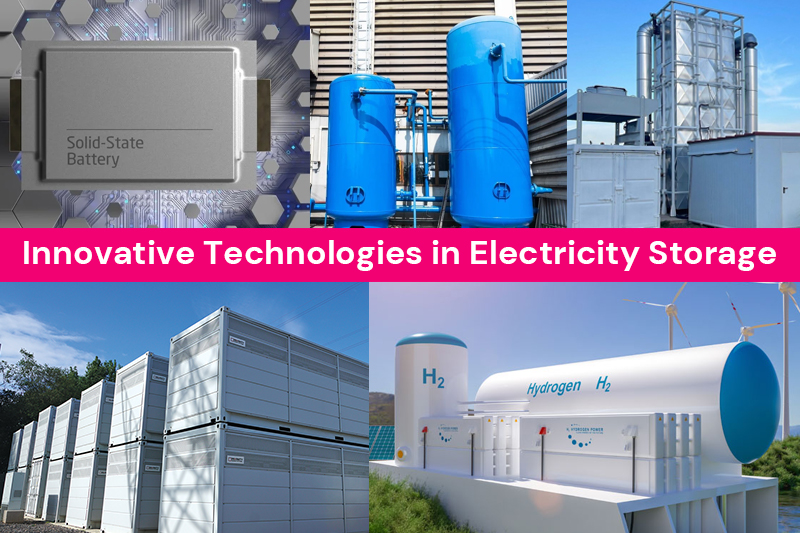
Though Lithium-ion batteries are considered the best solar battery storage system and currently dominate the global energy market, several advanced technologies are also emerging in 2024.
These technologies revolutionize how we store or use electricity and also help to meet the growing demand for more efficient and sustainable storage solutions.
So, let’s have a look at the groundbreaking technologies in electricity storage:
1. Solid-State Batteries
Solid-state batteries use solid electrolytes instead of liquid ones in traditional lithium-ion batteries. This makes them a game changer for electricity grid storage and electric vehicles, providing higher energy density, longer life cycles, and better security.
Also, they are lighter and more compact than conventional lithium-ion batteries, so more energy can be stored in smaller systems.
2. Flow Batteries
Flow batteries store energy in liquid electrolyte solutions, enabling scalable storage for large-scale applications.
Unlike traditional batteries, they use flowing electrolytes instead of fixed anodes and cathodes. Several companies in Australia are developing flow battery systems for residential, commercial, and national grid integration.
3. Hydrogen Storage
Australia is leading the world with the largest portfolio of hydrogen projects, valued at over $225 billion. It is also home to the highest number of green hydrogen initiatives currently in development compared to any other nation.
In this storage system, excess electricity uses renewable energy to split water into hydrogen and oxygen molecules through electrolysis.
Hydrogen can be stored and later used in fuel cells to produce electricity, offering long-term, large-scale storage for transport, industry, and power generation.
4. Compressed Air Energy Storage (CAES)
Compressed air energy storage technologies store energy in compressed form. When demand rises, this reserved energy is released to drive turbines and generate power.
They are ideal for large-scale and long-term storage. However, CAES has significant potential in Australia due to its vast underground caves.
5. Thermal Storage
Thermal energy storage (TES) stores excess electricity as heat in materials like molten salts. It is especially useful for concentrating solar power plants, enabling electricity generation after sunset or low production hours.
Thermal Storage is valuable in regions with high solar potential but limited grid infrastructure.
Top Market Trends Driving the Future of Electricity Storage in Australia
Government Support and Investment
The Australian government is committed to a 100% renewable energy transition and reducing their carbon emissions for a sustainable future.
As part of this commitment, they are heavily investing in energy storage solutions. For example, in NSW, the government offers $1,600-$2,400 incentives for solar battery installation, helping to accelerate the adoption of storage technologies.
The Decline in Battery Costs
One of the most significant drivers of innovation in electricity storage is the dramatic drop in battery prices.
Over the last decade, the price of lithium-ion batteries has decreased by more than 85%, making energy storage more affordable for consumers and utilities.
This trend is expected to continue with advancements in manufacturing and improved battery chemistry.
Increased Demand for Renewable Energy Sources
As Australians increasingly demand clean energy solutions, electricity storage becomes more critical for enabling the widespread adoption of renewable energy.
Businesses and households are increasingly turning to storage solutions like home batteries. This ensures a clean and reliable energy supply complemented by the country’s renewable energy targets.
Smart Grids Integration
Integrating storage systems like solar batteries with smart grid technology is an emerging trend around the globe.
Smart grids enable real-time monitoring and control of electricity distribution, allowing for more efficient energy supply and demand management. Together they can respond to fluctuations, providing more stability and efficiency to the power system grid.
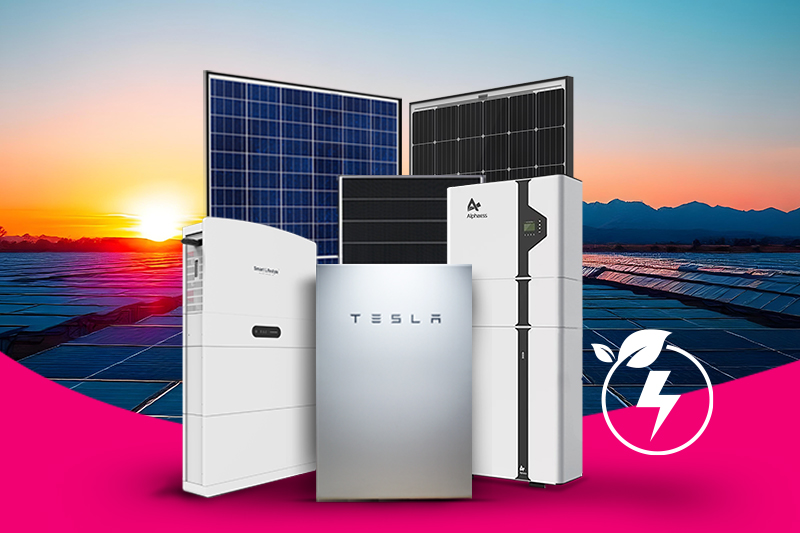
Break the Barriers: Overcoming the Challenges in Electricity Storage Technology
With the advancement of technologies and urban development, where buildings and infrastructures are becoming more electrified, energy demand is expected to rise dramatically.
While renewable energy offers the promise of a clean, carbon-free environment, the process of renewable energy or electricity storage is not that simple. The process presents a multitude of challenges.
Curious about the hurdles? Here’s a deeper look at the challenges that stand in the way of efficient electricity storage:
- High Upfront Costs: Many storage technologies, such as solar batteries like Tesla Powerwall, Alpha ESS, or Sungrow, remain expensive to implement on a large scale.
- Efficiency Losses: Some storage methods lose energy during conversion and storage processes.
- Limited Capacity: Storage systems like solar batteries may not hold enough energy for long periods. We need a large energy storage capacity, especially for large-scale grid needs.
- Space Requirements: Large-scale storage systems require significant land or infrastructure and long transmission lines
- Durability: Some storage technologies degrade over time, reducing their lifespan and performance.
- Environmental Impact: Production, recycling, and disposal of storage materials can have environmental concerns.
- Grid Integration Challenges: Integrating large-scale energy storage into power grids is challenging, especially in countries with diverse geography like Australia.
It requires significant infrastructure investment, grid management, and advancements in transmission technologies.
The government must identify the knowledge gap and run educational campaigns on electric storage benefits to unlock electricity storage’s full capabilities and break barriers.
They can also provide rebates and funds for large-scale wind farms or create collaborative ventures like community solar projects to accelerate growth.
Overall, these technologies could revolutionize access to electricity in remote communities and support cost-effective decarbonization in industry.
Game-Changing Energy Storage Projects Transforming Australia’s Energy Landscape
| Projects | Location | Rated Storage Capacity |
| Kentbruck Green Power Hub | Nelson, Victoria, Australia | 1,000,000kWh |
| New England Solar Farm | Uralla, New South Wales, Australia | 2,800,000kWh |
| Goyder South Project | Burra, South Australia, Australia | 1,800,000kWh |
| Bonshaw Solar PV Park | Inverell Shire, New South Wales, Australia | 450,000kWh |
| Geelong Big Battery Energy Storage | Geelong, Victoria, Australia | 450,000kWh |
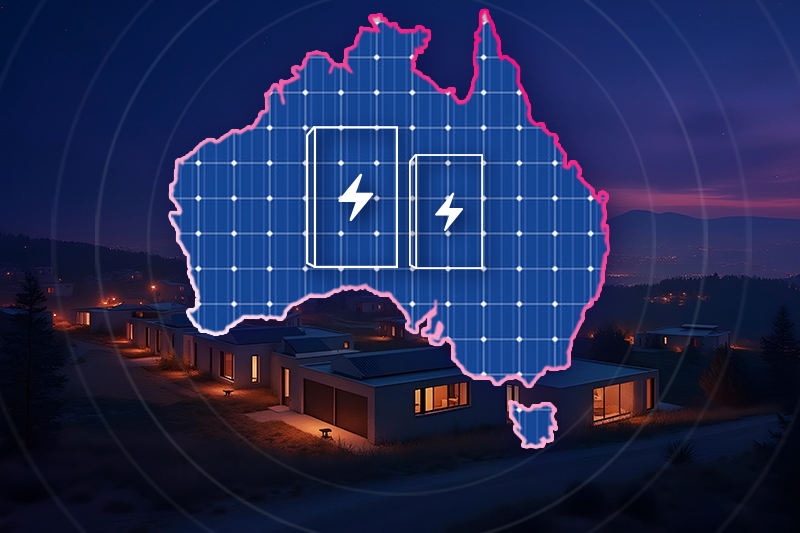
The Road Ahead: Australia’s Promising Future of Electricity Storage
As the world continues its transition to renewable energy, the future of electricity storage looks bright and promising. Innovations in battery technologies, hydrogen storage, and grid integration are pushing the boundaries of what’s possible.
With government support, ongoing research, and investments in new projects, Australia is also on track to become a global leader in energy storage.
Therefore, in the coming years, we expect to see even more exciting developments in storage technologies, driving the country toward a cleaner, more sustainable energy future.
Also, don’t forget to click on Solar Emporium for exciting battery storage. Embark on your solar journey with us, and check out our latest solar packages to save money and build a more energy-efficient future.
